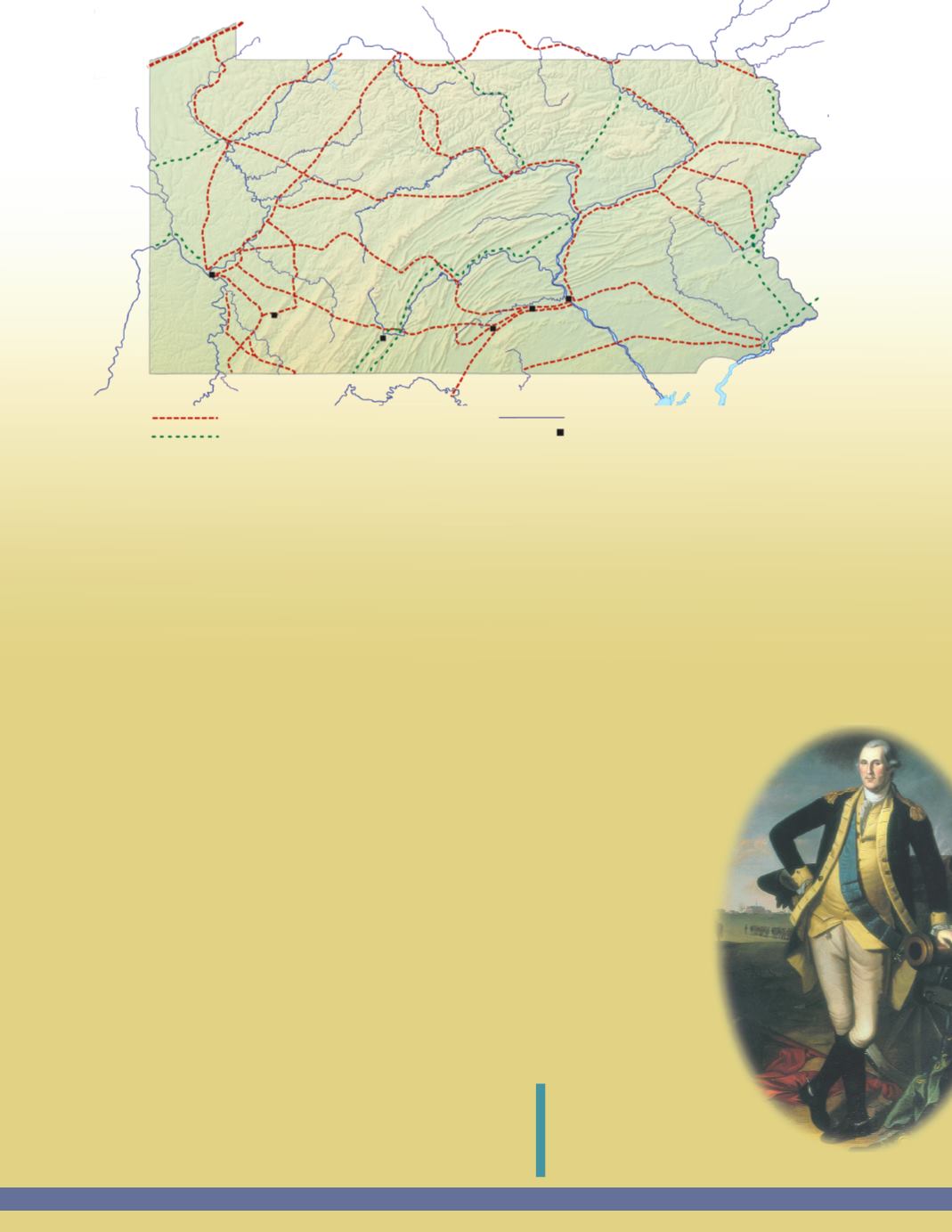
Let’s Not Forget About the PennsylvaniaWilderness
The Native Americans were skilled at trapping valuable fur-bearing animals like beaver, fox, and otter, which
were used in Europe tomake expensive clothing items such as beaver hats. English companies sent fur traders
to Indian villages to trade for the animal skins, known as
pelts
. In exchange for the pelts, Native Americans
received goods such as weapons, cloth, and iron kettles.
There were no roads into the wilderness—only paths and trails. Trading companies built trading posts in the
wilderness for travel between Native American villages in central and western Pennsylvania. They stored
hatchets, knives, beads, lace, and other items to trade with Native Americans for furs. Later, forts were built to
protect these frontier settlements fromNative American raids. Trading posts once stood where Harrisburg,
Carlisle, Shippensburg, Bedford, Ligonier, and Pittsburgh are today. Find these places on a statemap of
Pennsylvania and take note of the routes along which these communities were built.
Conflict in theWilderness
The European countries of France and England were setting up colonies all over the world.
They were building colonial
empires
, and both had North American colonies. Disagreement
and conflict began when the two countries claimed the same land. The French and English
believed that their explorers had been the first to claim land along the forks of the Ohio
River near present day Pittsburgh. The fur trade with the Native Americans was so
profitable
that both countries were ready to fight for control of it.
The French also saw this area as a central link in their grand plan to establish a
transportation systemby water fromMontreal to NewOrleans. The French empire in
North America stretched fromnortheast Canada west to Detroit, south along the
Mississippi River to St. Louis, and farther south into NewOrleans. The French saw
the Ohio River as a shortcut leading southwest across the frontier region.
The rush of men andmaterials toward the forks of the Ohio was destined to
provoke
a fight. The peaceful Quakers of Pennsylvania asked for help fromGovernor
Dinwiddie of Virginia, who represented English interests. In 1753, the Governor sent
21-year-old
GeorgeWashington
to order the French out of the region. After a long,
hard journey to the French Fort LeBoeuf near present day Erie, Washington delivered
hismessage. The French, however, refused to leave.
In 1754, Governor Dinwiddie ordered a fort built at the
forks of the Ohio River in an effort to keep the area under
British control. But the French captured it and
built their own,
Fort Duquesne
(du kane), in its place.
MajorNativeAmericanPaths
Other Paths
Rivers
Trading posts
A Clash of Two Empires in Pennsylvania
43
Before he became a hero
in our country’s fight for
independence, GeorgeWashington
was an officer for the British army
prior to the French and IndianWar.


